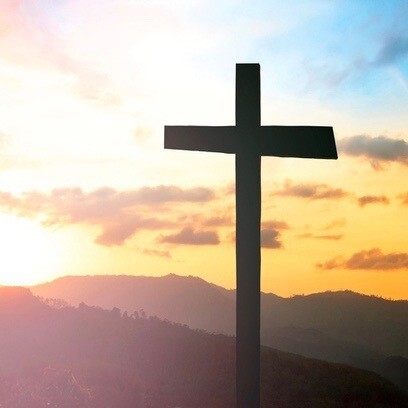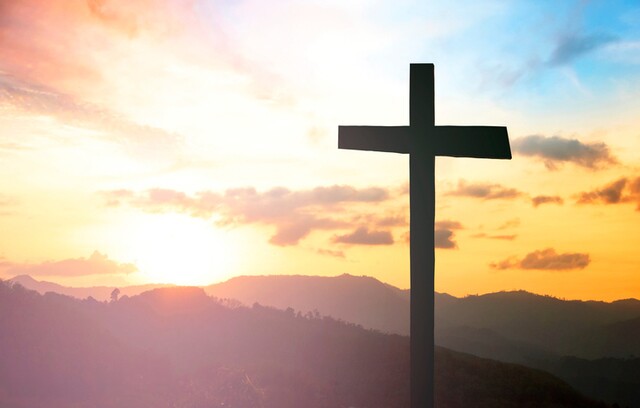In 2018, President Russell M. Nelsonplaced increased emphasis on using the full and correct name of the Church:
“For much of the world, the Lord’s Church is presently disguised as the ‘Mormon Church.’ But we as members of the Lord’s Church know who stands at its head: Jesus Christ Himself. Unfortunately, many who hear the term Mormon may think that we worship Mormon. Not so! We honor and respect that great ancient American prophet. But we are not Mormon’s disciples. We are the Lord’s disciples.”
Indeed, many non-members do not believe Latter-day Saints to be Christians, and a 2012 Pew Research Center reportfound that 49 percent of people in the U.S. do not believe The Church of Jesus Christ of Latter-day Saints is a Christian-based faith.
We want the world to know that Christ guides and directs His Church, so why do we not use the ubiquitous and recognizable symbol of His Atonement—the cross—as many other Christian sects do?
Elder Gregory A. Schwitzer, then-General Authority Seventy, asked a similar question in a 2011 address:
“Is the cross important to our faith?”
He continued:
“The answer is an unequivocal yes! The Redeemer’s suffering on the cross is vitally important to us and is an inseparable part of the Atonement, through which He suffered and died for our sins and thereby provided us with a clear path to salvation and exaltation. The Savior was clear when He stated that in following Him we should take upon ourselves a cross—not the Roman cross that was the instrument of death but our own cross, whereby we present a sacrifice to the Lord of our own heart to be obedient to His commandments.”
What does that look like in our lives?
Elder Marvin J. Ashton answered this question in a 1988 address:
“But what kind of cross do we each bear? What is its shape, weight, size, or dimension? The crosses we may carry are many: the cross of loneliness, the cross of physical limitations—loss of a leg, an arm, hearing, seeing, or mobility. These are obvious crosses. We see people with these crosses, and we admire their strength in carrying them with dignity. Poor health can be a cross, as can transgression, success, temptation, beauty, fame, or wealth. Financial burdens can be a cross. So can criticism or peer rejection.”
► You may also enjoy: What Latter-day Saints Believe About the Cross + Why We Don't Have It on Our Churches
In his address, Elder Ashton explained why Latter-day Saints often do not display the symbol of the cross, saying, “Over the centuries, in the minds of millions of people, the cross has been recognized as a symbol of Christianity. But rather than displaying the cross, we prefer to try carrying our crosses."
He continues:
“The Lord’s message to us is ‘Take up your cross.’ Take yourself the way you are, and lift yourself in the direction of the better. Regardless of where you have been, what you have done, or what you haven’t done, trust God. Believe in him. Worship him as you carry your cross with dignity and determination.”
The Sacrament
Each week we renew our covenants and take upon ourselves the name of Christ when we partake of the sacrament.
The sacred ordinance is a great example of how Latter-day Saints utilize and give thanks for Christ’s Atonement in an extremely personal way.
ChurchofJesusChrist.orgstates:
“The sacrament provides an opportunity for Church members to ponder and remember with gratitude the life, ministry, and Atonement of the Son of God. The broken bread is a reminder of His body and His physical suffering—especially His suffering on the cross. It is also a reminder that through His mercy and grace, all people will be resurrected and given the opportunity for eternal life with God.”
It's also through the sacrament that the Lord can help us bear our crosses.
Elder Dallin H. Oaks, in an October 2015 address, said:
"Because of His Atonement, the Savior has the power to succor—to help—every mortal pain and affliction. Sometimes His power heals an infirmity, but the scriptures and our experiences teach that sometimes He succors or helps by giving us the strength or patience to endure our infirmities."
True repentance, the sacrament, utilizing the Atonement, and striving to better shoulder the burdens placed on us in this mortal existence are signs of our appreciation for the Atonement.
President Gordon B. Hinckley famously recounted a conversation he had with a Protestant minister, saying:
"Said he: 'I’ve been all through this building, this temple which carries on its face the name of Jesus Christ, but nowhere have I seen any representation of the cross, the symbol of Christianity. I have noted your buildings elsewhere and likewise find an absence of the cross. Why is this when you say you believe in Jesus Christ?' "I responded: 'I do not wish to give offense to any of my Christian colleagues who use the cross on the steeples of their cathedrals and at the altars of their chapels, who wear it on their vestments, and imprint it on their books and other literature. But for us, the cross is the symbol of the dying Christ, while our message is a declaration of the Living Christ.' "He then asked: 'If you do not use the cross, what is the symbol of your religion?' "I replied that the lives of our people must become the most meaningful expression of our faith and, in fact, therefore, the symbol of our worship."
Lead image from Getty Images


